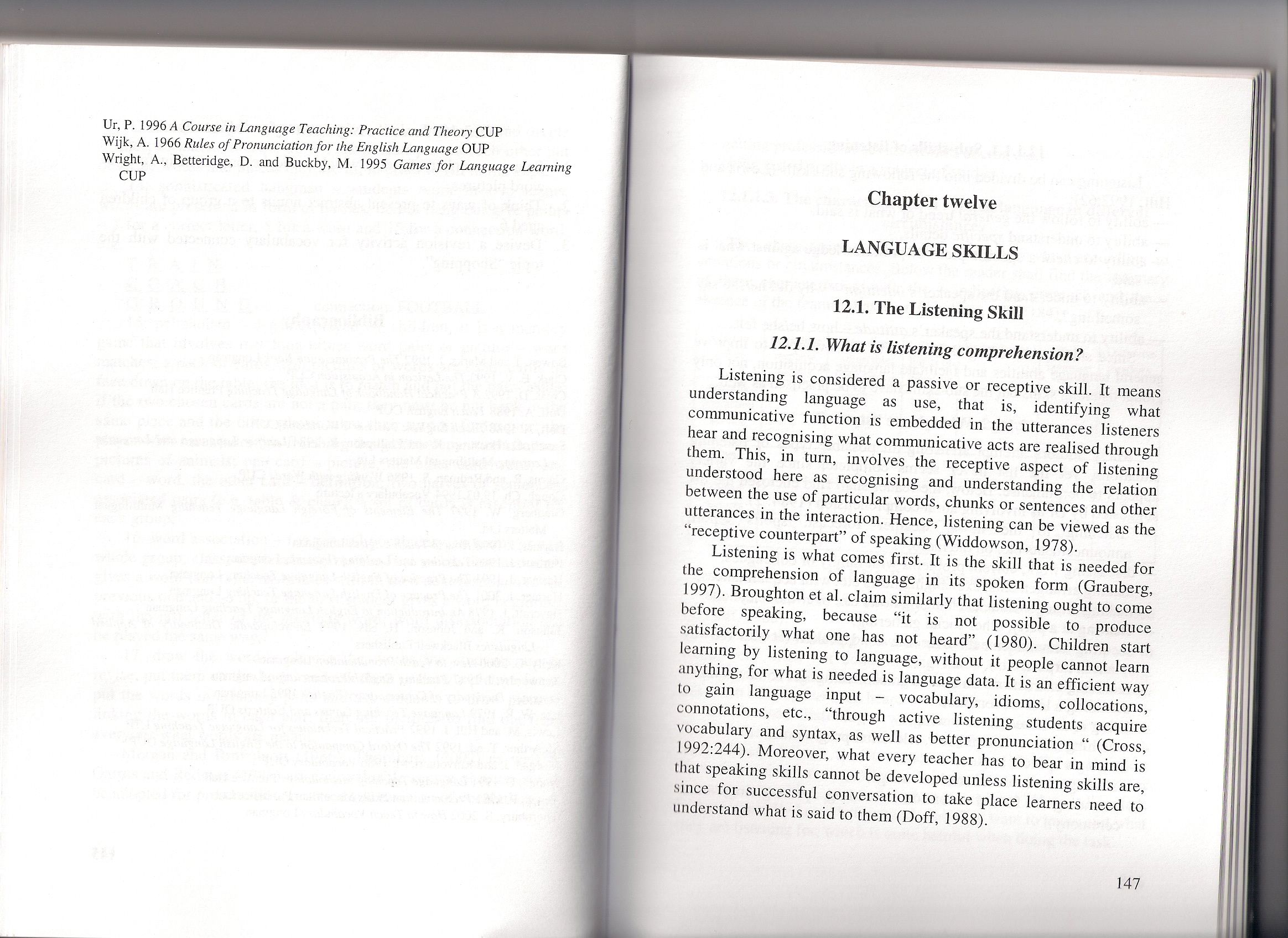skanowanie0073 (3)

Ur, P. 1996 A Course in Language Teaching: Practice and Theory CUP
Wijk, A. 1966 Rules ofPronunciationfor the English Language OUP
Wright, A., Betteridge, D. and Buckby, M. 1995 Games for Language Leaming
CUP
Chapter twelve
LANGUAGE SKILLS 12.1. The Listening Skill 12.1.1. What is listening comprehension?
Listening is considered a passive or receptive skill. It means understanding language as use, that is, identifying what communicative function is embedded in the utterances listeners hear and recognising what communicative acts are realised through them. This, in tura, involves the receptive aspect of listening understood here as recognising and understanding the relation between the use of particular words, chunks or sentences and other utterances in the interaction. Hence, listening can be viewed as the “receptive counterpart” of speaking (Widdowson, 1978).
Listening is what comes first. It is the skill that is needed for the comprehension of language in its spoken form (Grauberg, 1997). Broughton et al. claim similarly that listening ought to come before speaking, because “it is not possible to produce satisfactorily what one has not heard” (1980). Children start learning by listening to language, without it people cannot leam anything, for what is needed is language data. It is an efficient way to gain language input - vocabulary, idioms, collocations, connotations, etc., “through active listening students acąuire vocabulary and syntax, as well as better pronunciation “ (Cross, 1992:244). Moreover, what every teacher has to bear in mind is that speaking skills cannot be developed unless listening skills are, sińce for successful conversation to take place leamers need to understand what is said to them (Doff, 1988).
147
Wyszukiwarka
Podobne podstrony:
skanowanie0028 (21) Chapter fiveLITERATURĘ IN LANGUAGE TEACHING 5.1. Background Why should a languag
ARKUSZE OBSERWACYJNEGAMES Select two games used by the teacher during your teaching practice and des
AutoCAD II ID206, 2 credils This first semester course in Computer-Aided Design and Drafting (CADD)
Cueing is accurate. damped in both di-rections. and operable with ihe dusi cover closed. The tumtabl
skanowanie0037 (13) Cohen, A.D. 1989. Second Language Testing. In: Teaching English as a Second or F
skanowanie0011 (59) 2.3.3 The main characteristics ofthe OralApproach 1. Language
skanowanie0020 (27) Suggestopedia is a method of foreign language teaching developed by the Bulgaria
skanowanie0005 (107) PART ONE Chapter one AIMS AND OBJECTIVES OF FOREIGN LANGUAGE TEACHING 1.0. Term
więcej podobnych podstron